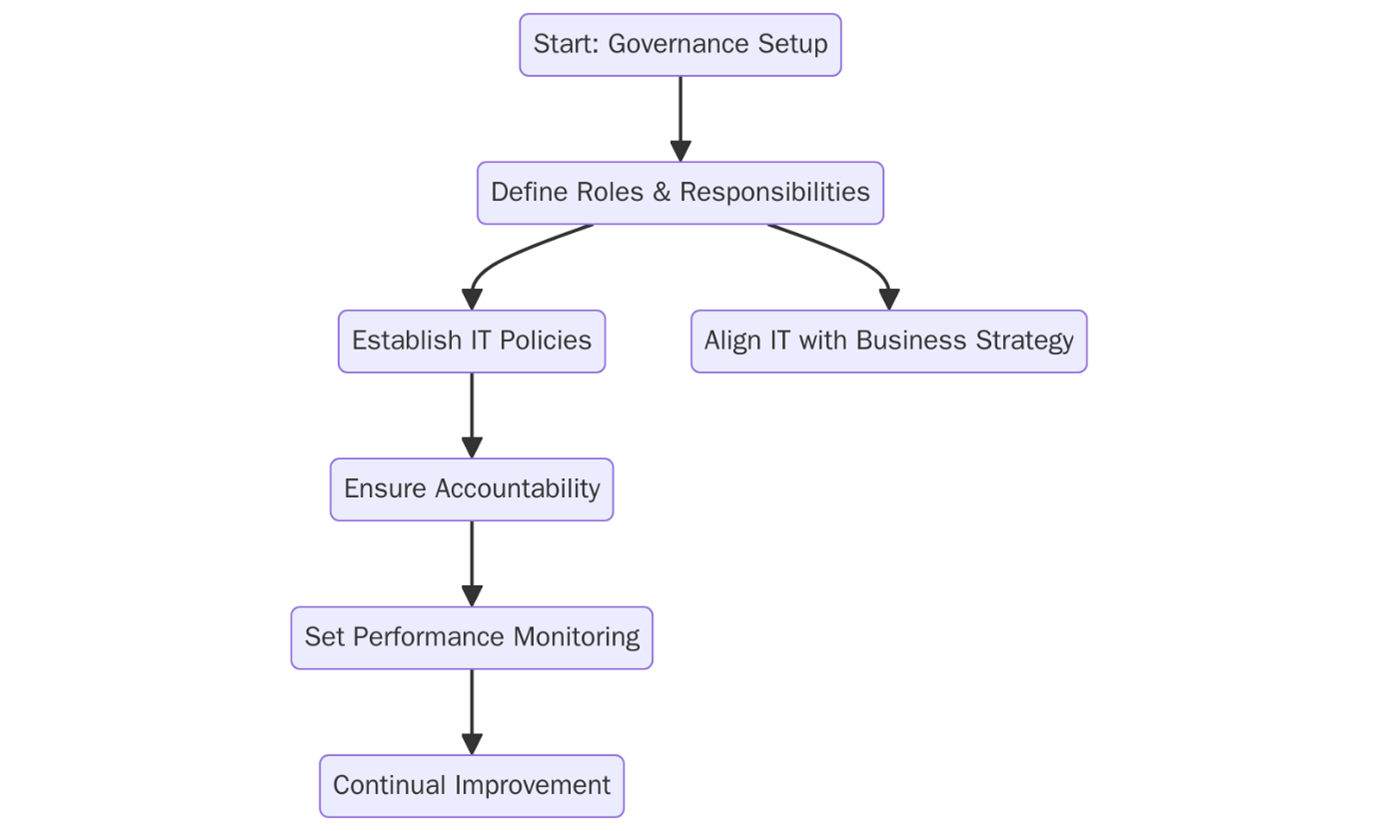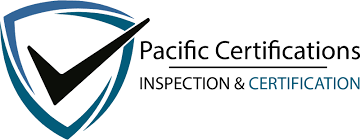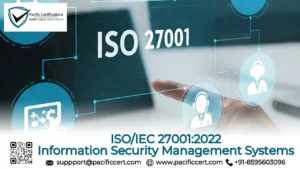What is ISO/IEC 38500:2024?

ISO/IEC 38500:2024 provides global guidance for organizational leaders on the effective, ethical and efficient governance of information technology (IT). The standard helps boards and executives to ensure that IT aligns with business goals, delivers measurable value and supports sustainable development through responsible digital transformation.
The 2024 revision builds on earlier versions by integrating contemporary challenges such as cloud migration, artificial intelligence governance, remote workforce management, digital ethics, and sustainability. It also recognizes the need for governance to support performance and proactively manage digital risks and opportunities. Organizations adopting this standard are encouraged to embed governance at all levels, from board strategy to project execution. In a world where technology underpins nearly all aspects of operations and marketing advantage, the standard provides a timely foundation for organizations to demonstrate trustworthiness and accountability in how they govern digital systems.
For audit and certification support, contact support@pacificcert.com.
Key Principles of ISO/IEC 38500:2024
ISO/IEC 38500 is centered around six high-level principles:
- Responsibility: Assign roles, accountability, and decision-making rights clearly for all aspects of IT governance. This includes defining who authorizes budgets, reviews performance, handles risks, and monitors IT outcomes.
- Strategy: Ensure IT strategies support the organization’s broader goals and future vision. Strategic alignment ensures resources are invested in the right priorities, including digital innovation, transformation initiatives, and legacy system management.
- Acquisition: Validate that IT investments are cost-justified, value-driven, and responsibly procured. Governance must address lifecycle planning, vendor selection, procurement transparency, and post-implementation performance.
- Performance: Establish governance mechanisms to track IT performance against service-level agreements, KPIs, and business expectations. This includes assessing system availability, user satisfaction, innovation enablement, and cost-effectiveness.
- Conformance: Comply with applicable legislation, regulatory requirements, and internal standards. IT governance should enable effective oversight of cybersecurity, data protection, environmental impact, and contractual obligations.
- Human Behavior: Consider the cultural, social, and ethical impacts of IT decisions on employees, customers, and society. Governance should promote inclusivity, digital accessibility, ethical AI usage, and digital well-being.
These principles serve as a reference point for assessing, directing, and monitoring IT across its lifecycle and within its organizational context. They also encourage leadership to consider IT not as an isolated domain, but as a driver of transformation across financial and social outcomes.
Who Should Use the Standard ISO/IEC 38500:2015?
ISO/IEC 38500 is designed for:
- Board directors and executive leaders
- CIOs and IT governance officers
- Audit, legal, and compliance teams
- Procurement officers involved in IT investment decisions
- IT service providers managing enterprise infrastructure or cloud services
It is especially relevant to organizations:
- Undergoing digital transformation or business model innovation
- Operating in highly regulated industries such as healthcare, finance, and critical infrastructure
- Seeking to enhance IT transparency, decision-making, and stakeholder trust
- Engaged in mergers, acquisitions, or enterprise-level IT integrations
The standard is equally applicable to startups and SMEs that wish to embed strong governance principles early in their growth to prepare for scaling, investment, or regulatory oversight.
Clauses of ISO/IEC 38500:2024
Clause No. | Clause Title | Description |
1 | Scope | Defines the scope of the standard, applicable to the governance of current and future use of IT. |
2 | Normative References | Lists essential references, including ISO 37000, for organizational governance alignment. |
3 | Terms and Definitions | Provides key definitions for consistent understanding and application across stakeholders. |
4 | Good Governance of IT | Outlines key governance outcomes: effective performance, responsible stewardship, and ethical behavior. |
5 | Principles for the Governance of IT | Lists 12 guiding principles including value generation, accountability, risk governance, and stakeholder focus. |
6 | Model for the Governance of IT | Describes the core governance tasks: Evaluate, Direct, Monitor IT activities and decisions. |
7 | Framework for the Governance of IT | Provides a structured approach for implementing governance principles and aligning IT with organizational goals. |
What are the Benefits of Implementing ISO/IEC 38500?
- Enhances strategic alignment between IT and business objectives
- Promotes ethical and responsible decision-making around emerging technologies
- Increases transparency, traceability, and accountability in IT governance
- Improves risk management, particularly in areas such as cybersecurity, AI, and data privacy
- Boosts value delivery from IT projects and digital investments
- Reduces the likelihood of project failure, budget overruns, or reputational harm
- Establishes a repeatable governance framework adaptable across functions and sectors
- Reinforces trust among internal and external stakeholders, including investors and regulators

Get expert assistance for ISO/IEC 38500 certification process at support@pacificcert.com.
What is the Certification Process of of ISO/IEC 38500:2015?
Organizations can incorporate ISO/IEC 38500 and its governance framework into internal assessments and certifications like ISO 9001, ISO/IEC 27001, and ISO/IEC 20000-1. Process involves:
- Conducting a governance maturity assessment
- Establishing or updating IT governance policies
- Defining roles and responsibilities for IT oversight
- Aligning IT performance indicators with business KPIs
- Integrating IT governance into enterprise risk and quality systems
- Training executives and governance committees on ISO/IEC 38500 principles
- Periodic monitoring and review using dashboards, audits, and stakeholder feedback
Organizations may choose to publish conformance declarations or include ISO/IEC 38500 alignment in their sustainability or annual governance disclosures.
To begin structured governance implementation, contact support@pacificcert.com.
What Documentation is Required for ISO/IEC 38500:2015?
To demonstrate adherence to ISO/IEC 38500 principles, organizations should maintain:

- IT governance charter and policy documents
- Strategic IT alignment frameworks
- Roles and responsibilities matrices
- Investment evaluation criteria and project approval workflows
- Compliance checklists and legal risk registers
- Performance and benefit realization reports
- Audit logs and conformance evaluation reports
These documents also serve as evidence for board reviews, investor due diligence, or external audits under other regulatory or standards-based frameworks.
Need certification and documentation support? Email support@pacificcert.com.
Implementation Timeline of ISO/IEC 38500:2015
Implementation timelines vary depending on maturity, existing frameworks, and resource availability. A typical roadmap might include:
- Governance Assessment & Planning: 2–3 weeks
- Policy Development & Role Assignment: 2–4 weeks
- Training & System Integration: 2–3 weeks
- Monitoring, Review & Improvement: 1–2 weeks
For larger or decentralized organizations, this timeline may extend up to 16 weeks to account for stakeholder coordination, regional IT variances, or alignment with global standards. Estimated total duration: 8–12 weeks.
What is the Implementation Costs of ISO/IEC 38500:2015?
ISO/IEC 38500:2015 process cost varies depending on the organization’s size, IT governance complexity, number of operational locations, and whether the assessment is conducted as a standalone conformance audit or integrated with certifiable standards like ISO/IEC 27001 or ISO 20000. Costs are also influenced by the level of documentation readiness and the duration of the audit process.
With digital transformation accelerating, organizations are under increasing scrutiny to demonstrate accountability and governance over technology decisions. The ISO/IEC 38500 framework helps ensure board-level oversight on cybersecurity, sustainability, data privacy, digital ethics, and technology risk.
Its relevance is growing across sectors like finance, healthcare, government, education, utilities, and supply chain services. It complements governance models like COBIT, NIST, and ESG-aligned digital leadership initiatives. The increasing adoption of AI, IoT, and blockchain systems underscores the need for effective IT governance frameworks like ISO/IEC 38500 to ensure that innovation does not outpace ethical and operational oversight.
If you are looking for ISO/IEC 38500 alignment or audit certification, contact us at support@pacificcert.com!
In conclusion, as digital systems become more embedded in organizational success and global expectations for responsible technology use increase, ISO/IEC 38500:2024 equips leadership with a structured yet flexible model to govern IT effectively and sustainably. It supports decision-makers in understanding the implications of technology choices while enabling high performance, compliance, and digital trust.
By integrating this standard into enterprise governance structures, organizations can proactively manage digital risks, maximize value delivery, and demonstrate responsible leadership in an evolving technology landscape.
Whether applied as a standalone governance framework or integrated with other ISO and sectoral standards, ISO/IEC 38500 provides a blueprint for resilient and future-ready digital governance.
To assess your governance readiness or integrate ISO/IEC 38500 into your IT strategy, contact support@pacificcert.com.
FAQs – ISO/IEC 38500:2015
What is ISO 38500 model?
ISO/IEC 38500 is the international standard for the corporate governance of information technology, and provides guidance to those advising, informing or assisting directors on the effective and acceptable use of information technology (IT) within the organisation.
What are the six principles of ISO 38500?
Evaluate, Direct and Monitor in the Six Principles. The three tasks of the governing body each exist within the context of the six principles defined in ISO 38500 (Responsibility, Strategy, Acquisition, Performance, Conformance and Human Behaviour)
What is the latest version of ISO IEC 38500?
ISO/IEC 38500:2024 is the latest edition of the international standard that outlines principles for effective governance of information technology. This standard guides organisations in making informed decisions about the strategic and responsible use of IT.
What is the difference between ISO 27001 and 38500?
This depends on organizational priorities. If the primary concern is information security, start with ISO 27001. If the focus is on improving IT governance & strategic alignment, begin with ISO 38500. Many organizations benefit from implementing both simultaneously.
What is the full form of ISO IEC 38500?
ISO/IEC 38500 is an international standard for Corporate governance of information technology published jointly by the International Organization for Standardization (ISO) and the International Electrotechnical Commission (IEC).
Is ISO 38500 certifiable?
You will receive a certificate once you comply with all the requirements related to the selected credential.
Is ISO IEC 38500 important to the IT field?
ISO/IEC 38500 helps an organization manage its resources well concerning IT. Here are some key reasons why this standard is important: – Alignment with Business Goals: By following ISO/IEC 38500, organizations can ensure that their IT strategies are aligned with business objectives.
Ready to get ISO 38500:2024 certified?
Contact Pacific Certifications to begin your certification journey today!
Suggested Certifications –
Read more: Pacific Blogs






